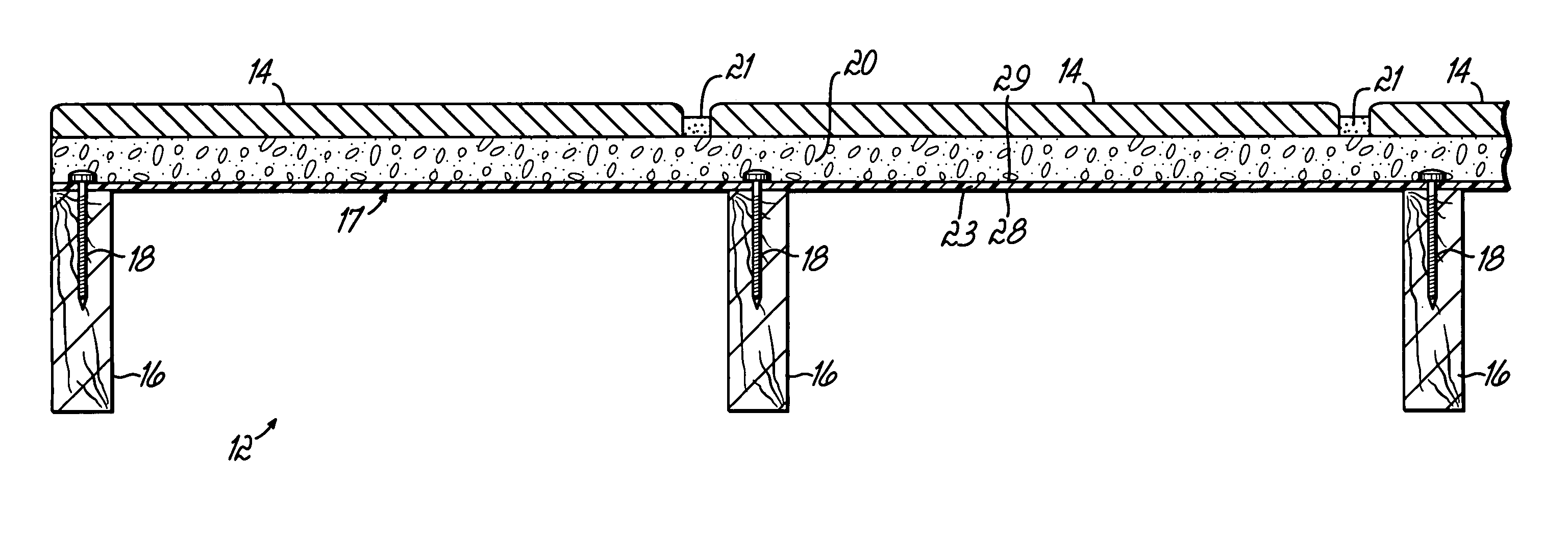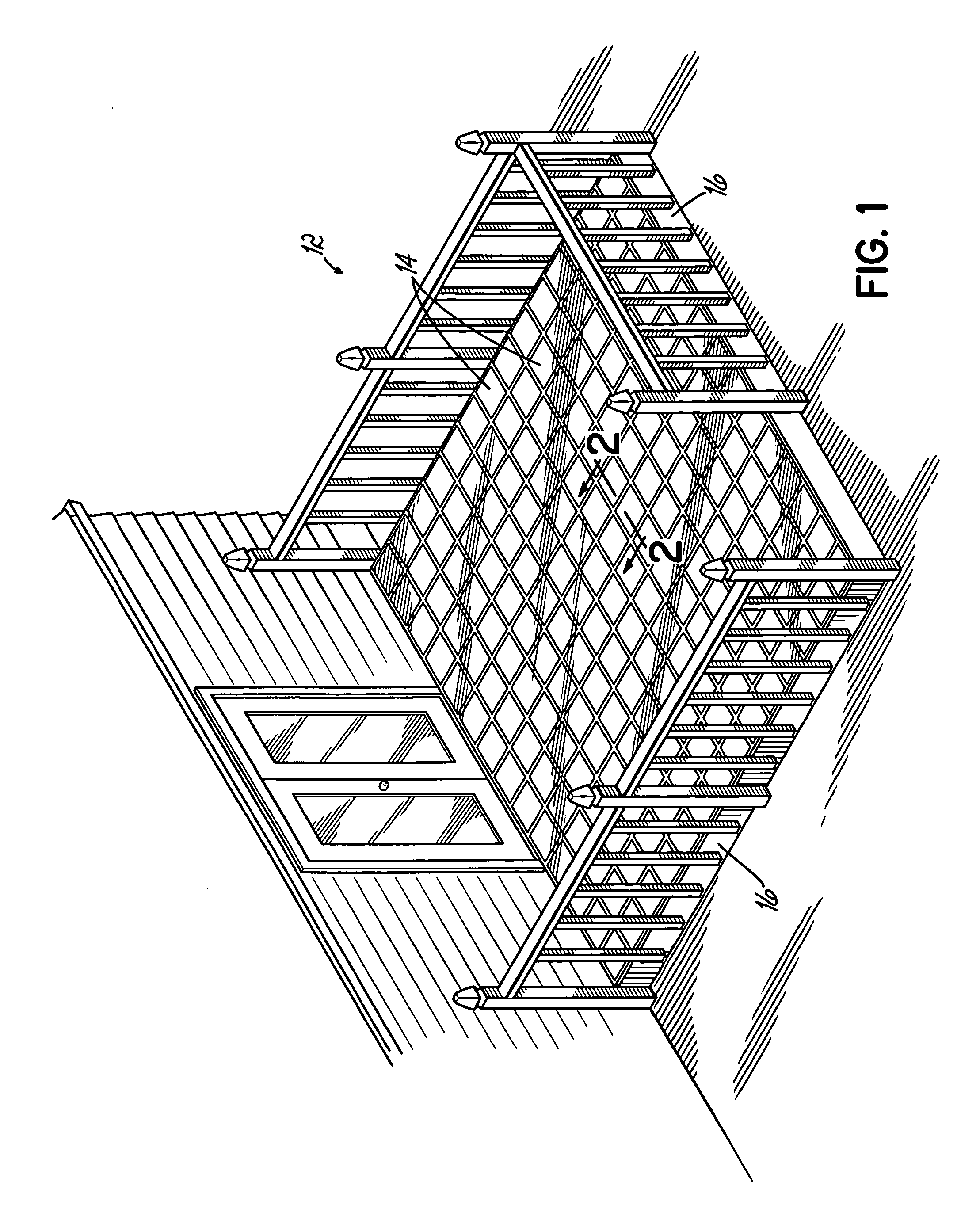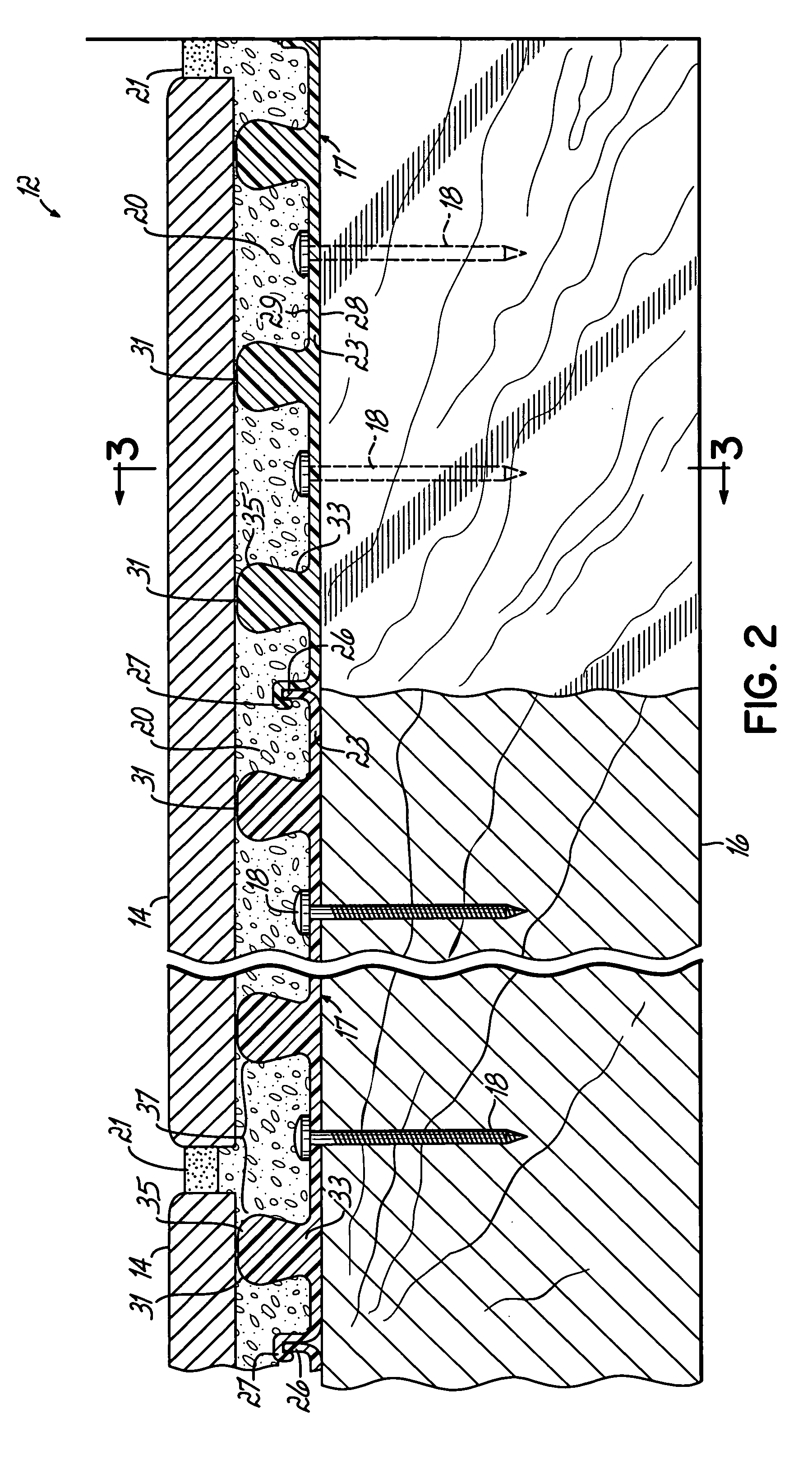Underlayment for tile surface
a technology for tile surfaces and underlayments, which is applied in the direction of buildings, buildings, constructions, etc., can solve the problems of inability to meet the requirements of construction,
- Summary
- Abstract
- Description
- Claims
- Application Information
AI Technical Summary
Benefits of technology
Problems solved by technology
Method used
Image
Examples
Embodiment Construction
[0016] As shown in FIGS. 1-4, the present invention includes a deck 12 (as shown attached to a house) which is covered with rigid covering 14. The rigid covering can be ceramic tile, porcelain tile, or stone. Hereinafter, the rigid covering will be referred to as tile. The deck itself is of typical construction formed from beams such as wood beams 16 which are, in turn, covered with pultruded planks 17 fastened to the beams with penetrating fasteners such as screws 18 (as shown) or nails, and the like. A cementitious adhesive layer 20 is used to adhere the tile 14 to the pultruded planks 17. The area between the individual tiles 14 is filled with grout 21.
[0017] The planks 17, as indicated, are preferably fiber-reinforced pultruded planks. Preferably, the pultruded plank 17 is formed from a thermo setting polyester resin with about 25%-70% by volume fiberglass filler. Preferably, the fiberglass is 50% by volume (65% by weight). This has a high modulus of elasticity and high tensile...
PUM
 Login to View More
Login to View More Abstract
Description
Claims
Application Information
 Login to View More
Login to View More - R&D
- Intellectual Property
- Life Sciences
- Materials
- Tech Scout
- Unparalleled Data Quality
- Higher Quality Content
- 60% Fewer Hallucinations
Browse by: Latest US Patents, China's latest patents, Technical Efficacy Thesaurus, Application Domain, Technology Topic, Popular Technical Reports.
© 2025 PatSnap. All rights reserved.Legal|Privacy policy|Modern Slavery Act Transparency Statement|Sitemap|About US| Contact US: help@patsnap.com



